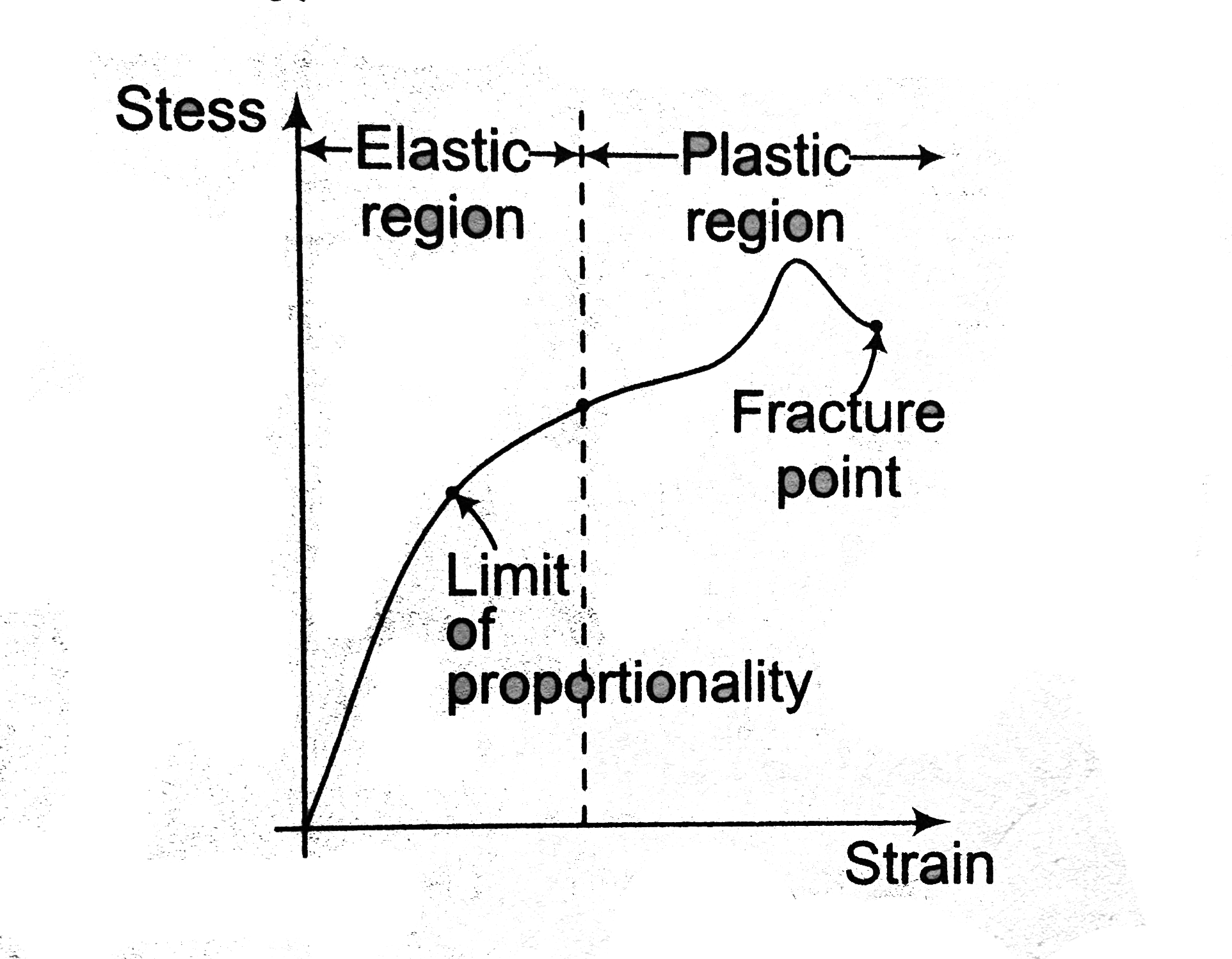According to Hooke's law within the elastic limit stressstrain= constant. The constant depends on the type of strain or the type of force acting. Tensile stress might result In compressional or elongative strain, however, a tangential stress can only cause a shearing strain. After crossing the elastic limit. the material undergoes elongation and beyond a stage beaks. All modulus of elastically are basically constants for the materials under stress
Two wires of same material have length and radius l,r and 2l,r2 respectively. The ratio of their Young's modulus is
1:2
2:3
2:1
1:1
The correct Answer is:D
Topper's Solved these Questions
- ELASTICITY BOOK - CHHAYA PUBLICATIONCHAPTER - ELASTICITY EXERCISE - ENTRANCE CORNER (Integer answer Type)
5 Videos
- ELASTICITY BOOK - CHHAYA PUBLICATIONCHAPTER - ELASTICITY EXERCISE - EXAMINATION ARCHIVE WITH SOLUTIONS (WBCHSE)
6 Videos
- ELASTICITY BOOK - CHHAYA PUBLICATIONCHAPTER - ELASTICITY EXERCISE - ENTRANCE CORNER (Multiple correct answer type)
6 Videos
- DOPPLER EFFECT IN SOUND BOOK - CHHAYA PUBLICATIONCHAPTER - DOPPLER EFFECT IN SOUND EXERCISE - CBSE SCANNER
2 Videos
- EXPANSION OF GASESBOOK - CHHAYA PUBLICATIONCHAPTER - EXPANSION OF GASESEXERCISE - CBSE Scanner
1 Videos
Similar Questions
According to Hooke's law, within the elastic limit stress/strain = constant. This constant depends on the type of strain or the type of force acting. Tensile stress might result in compressional or elongative strain, however, a tangential stress can only cause a shearing strain. After crossing the elastic limit, the material undergoes elongation and beyond a stage beaks. All modulus of elasticity are basically constants for the materials under stress.
If stress/strain is x in elastic region and y in the region of yield, then
View SolutionOn gradual loading , stress - strain relationship for a metal wire is as follows . Within proportionality limit , stress ∝ strain or, Stressstrain = a constant for the material of wire.
Two wires of same material have length and radius (L,r) and (2L,r2). The ratio of their young's modulii is

View Solution
Knowledge Check
According to Hooke's law, within the elastic limit stress/strain = constant. This constant depends on the type of strain or the type of force acting. Tensile stress might result in compressional or elongative strain, however, a tangential stress can only cause a shearing strain. After crossing the elastic limit, the material undergoes elongation and beyond a stage beaks. All modulus of elasticity are basically constants for the materials under stress.
If stress/strain is x in elastic region and y in the region of yield, thenAx=yBx>yCx<yDx=2yAccording to Hooke's law of elasticity the ratio of stress too strain
Adoes not remain constantBremain constantCincreasesDdecreasesAccording to Hooke's law of elasticity, if stress is increased, the ratio of stress to strain
AIncreasesBDecreasesCRemains constantDDepends on condition
According to Hooke's law of elasticity, if stress is increased, the ratio of stress to strain
View SolutionAccording to Hooke's law of elasticity, if stress is increaed, the ratio of stress to strain
View SolutionOn gradual loading , stress - strain relationship for a metal wire is as follows . Within proportionality limit , stress ∝ strain or, Stressstrain = a constant for the material of wire.
Two wires of same material have length and radius (L,r) and (2L,r2). The ratio of their young's modulii is

View SolutionAccording to Hooke's Law of Elasticity, if stress is increased, the ratio of stress to strain
View SolutionWithin the elastic limit, the ratio of shear stress and shearing strain is called
View Solution
